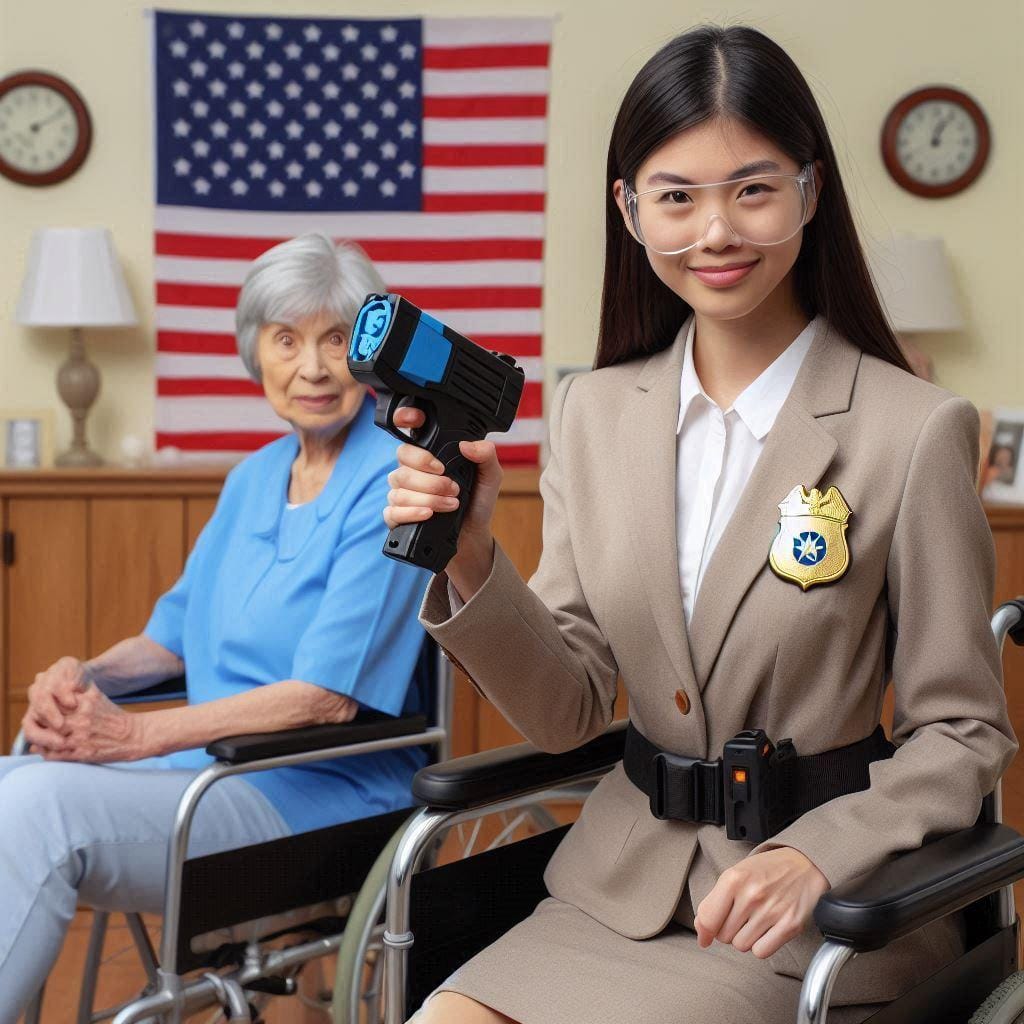Feeling safe and secure is a fundamental human right. Unfortunately, statistics show that women with disabilities are four times more likely to experience violence than women without disabilities (Source: NDRN). This article explores a variety of self-defense options, including situational awareness and de-escalation techniques, specifically tailored to empower women with disabilities in the United States. By taking proactive steps, you can increase your confidence and preparedness, enhancing your sense of security.
Key Highlights
- 4x More at Risk? This article explores self-defense options specifically designed to empower women with disabilities in the US.
- Beyond Pepper Spray? Discover alternatives to traditional self-defense tools and strategies specifically suited for various accessibility needs.
- Train Like a Superhero (Your Way): Learn how self-defense classes can be adapted for YOU, enhancing your confidence and preparedness.
 Image Credit Goes to Self Defense Mall
Image Credit Goes to Self Defense Mall
Self-Defense Tools for Various Needs
Choosing the right self-defense tool is crucial for personal safety. Explore a range of effective self defense weapons for women, ensuring legality and accessibility considerations. Discover non-lethal and lethal choices designed with features like easy grip and simplicity, ideal for varying physical abilities and legal requirements.
Non-lethal Options:
- Pepper Spray: This readily available option allows for self-defense from a safe distance. Choose a canister with a safety mechanism and familiarize yourself with local laws regarding its use.
- Personal Alarm: A piercing alarm can startle an attacker and draw attention. Look for alarms with easy activation features and consider attaching them to a purse, belt loop, or keychain.
- Kubotan: This keychain-sized weapon can be used for strikes and pressure points. Training is highly recommended to ensure proper and safe use.
- Alternatives: For those with respiratory concerns, consider alternative deterrents like a loud whistle or air horn.
Considerations for Accessibility:
- Grip strength: For those with limited grip strength, consider pepper spray with a larger, easier-to-hold canister or keychain alarms with easy activation buttons.
- Fine motor skills: If fine motor skills are affected, look for pepper spray with holster clips for easy access or personal alarms with single-button activation.
- Mobility limitations: For individuals who use a wheelchair or other mobility aids, consider a personal alarm with a loud enough sound to attract attention or a strategically placed guard dog spray (check local legality).
Lethal Options:
- Firearms: Firearms can be a powerful deterrent, but they require extensive training and responsible handling. State laws regarding concealed carry vary significantly. Carefully consider the legalities, safety measures, and emotional readiness before pursuing this option.
Training is Key
Regardless of the chosen self-defense tool, proper training is essential. Look for reputable self-defense classes specifically designed for women with disabilities. These classes will provide instruction on:
- Safe and effective use of chosen tools
- De-escalation techniques
- Situational awareness
- Combative and non-combative self-defense strategies
- Online resources are also available, but in-person training allows for personalized instruction and practice adapting techniques to your specific needs.
Remember, you are strong and capable. By taking proactive steps to develop your situational awareness, explore self-defense options, and get proper training, you can increase your confidence and preparedness, enhancing your sense of security.
Beyond Weapons: Situational Awareness and Prevention
While self-defense tools can be valuable, prevention is paramount. Here are some key strategies to develop your situational awareness and employ de-escalation techniques:
- Be aware of your surroundings: Trust your gut instinct. If a place feels unsafe, avoid it or leave immediately.
- Plan your route: Choose well-lit, populated areas when walking or running. Inform someone where you’re going and when you expect to be back.
- Practice assertive communication: Maintain eye contact and speak confidently. A strong presence can discourage potential threats.
- De-escalation techniques: If confronted, try to de-escalate the situation by speaking calmly, avoiding arguments, and setting clear boundaries.
Conclusion:
Feeling empowered and secure doesn’t happen overnight, but by taking proactive steps you can significantly increase your confidence and preparedness. This article has explored various self-defense options and strategies specifically tailored for women with disabilities. Remember, prevention is key. Develop your situational awareness, practice de-escalation techniques, and choose a self-defense tool that works best for you. Most importantly, find a reputable self-defense class designed for individuals with disabilities. With proper training, you can learn to effectively use your chosen tool, adapt techniques to your specific needs, and gain the skills and confidence to navigate potentially dangerous situations.
Empower yourself. Take charge of your safety.
Disclaimer: This article is for informational purposes only and should not be interpreted as legal advice. Always check local and state laws regarding self-defense tools.
Also Read: 7 Tips To Perform Umrah for Womens

